The new Cheers exhibition at WMODA features a striking stoneware plaque promoting Greene King Ales. We invite you to spend a “night on the tiles” exploring Royal Doulton’s diverse contributions to British pub decor, from tile murals glimmering under gas lights to plaques advertising brewer’s logos.
“A night on the tiles” is a British expression about staying up very late in a bar. I was disappointed to discover that the saying does not derive from all the tiled decoration in Victorian pubs. It dates from the London Blitz during World War II when firefighters spent the night on the roof tiles with buckets of water to extinguish flames from incendiary bombs. Hopefully, they had some well-deserved refreshments later at one of the traditional pubs, which could be found on almost every street corner in London.
British drinking establishments date back to Roman times and were used by travelers and pilgrims during the Middle Ages. Many inns and taverns became community gathering places, and they are still social hubs today. However, the gin craze of the 18th century led to disreputable drinking habits, and the Beerhouse Act of 1830 aimed to promote beer consumption as a healthier alternative. The number of public houses boomed throughout the 19th century despite more government acts to curtail drinking dens.
In Victorian times, thirsty workers were tempted into magnificent pubs by tiled exteriors glistening under the gas lights. Often, picture panels at the doorway conjured up the pub’s name for the illiterate as with the White Swan. Inside, tiled walls were practical as well as decorative in the smoke-filled atmosphere as they could be easily cleaned. The most opulent establishments were further enriched with polished mahogany bars, gleaming metalwork and etched mirrors and became known as “Gin Palaces.”
The Doulton Potteries in Lambeth specialized in colorful high-fired stoneware tiling that was impervious to atmospheric corrosion. Doultonware was used on the exteriors of many London pubs in the late 19th and early 20th centuries, and it could be used as a cladding material or modeled into balusters, columns, and capitals. One of the most spectacular surviving buildings is the Palsgrove Hotel in the Strand, now a branch of Lloyd’s Bank. Inside, there are tile murals depicting scenes from Ben Jonson’s plays, providing a visual feast for account holders.
Ben Jonson was a contemporary of William Shakespeare, whose plays are also featured on Doulton tiles. The St. James Tavern near Piccadilly has several tile murals depicting the jovial, corpulent character, Sir John Falstaff, who spends most of his time drinking in taverns. The panels, which date from the mid-1880s, were originally at the Red Lion Hotel in Fulham, and one can also be seen at the Gladstone Pottery Museum.
Some architects considered the reflection of light on glazed exteriors detrimental to the general effect of the building, and Doulton developed a matte-glazed stoneware called Carrara ware after the famous Italian marble. The Fox and Anchor pub in Farringdon, designed by William J. Neatby in 1898, is one of the most decorative Carrara ware survivors.
In the early 1900s, plain-colored tile cladding was more common for new pub buildings, and Doulton provided a popular blue-green glaze, which still survives on The Beehive in Brentford. This area of London was notorious for the number of drinking establishments – 42 public houses were counted on one street alone in the 1870s, leading to a notorious reputation for the community. The Beehive, which opened in 1907, advertised itself as “a suitable place for ladies to lunch.”
In the late 19th century, around 12,000 British pubs brewed their own beer, but this number had dropped to 1,500 by 1914 as breweries began taking over independent pubs, creating “tied” houses. At the outbreak of World War I, the British government was concerned about drunkenness in the workforce and claimed, “We are fighting Germany Austria and drink, and… the greatest of these deadly foes is drink.” The Defence of the Realm Act in 1914 restricted beer production and encouraged a reduction in the strength of beer.
Brewers brought a new, improved approach to pub design in suburban areas between the wars, returning to traditional English vernacular styles of architecture, such as Tudor and Georgian. The improved public house provided food and leisure activities to encourage a new clientele and discourage the drunken rabble. Gone was the flamboyant decoration of the gin palaces, and large tiled schemes were rare. One exception was Henekey & Co, a London wine merchant that operated a chain of bars in the southeast of England. In 1937, they commissioned Doulton to produce tile murals of sailing vessels carrying barrels of wine, one of which is now in Arthur Wiener’s private collection.
Doulton adapted to the times by advertising the production of brewer’s pub signs for tied houses, and they produced plaques in their Polychrome Stoneware body for the West Country Breweries, Arkells, and the Greene King Brewery. Founded in 1799, Greene King was named after the partnership of Benjamin Greene and Frederick King and is now the country’s leading pub retailer and brewer with over 3,100 establishments. George Edward Kruger Gray, a distinguished Royal Academy artist of coinage and stained-glass windows, designed the Greene King sign in 1933. They can still be seen on the facades of pubs in the Cambridge area, but rebranding led to the removal of many and their appearance at auction. WMODA has two different designs in the collection.
Until the closure of the Lambeth Potteries in 1956, Doulton also produced London’s commemorative blue plaques recording the homes of notable people similar to the plaque recently erected in honor of Clarice Cliff. They also made the rectangular plaques commissioned by the City of London to mark historic locations since 1879. If you get to London on vacation, you can take a fascinating pub crawl around the capital spotting Doulton tiles and blue plaques.
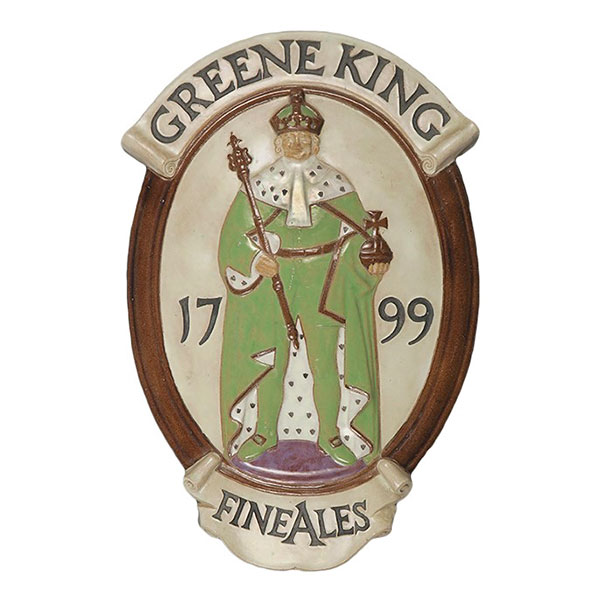
Greene King Fine Ales
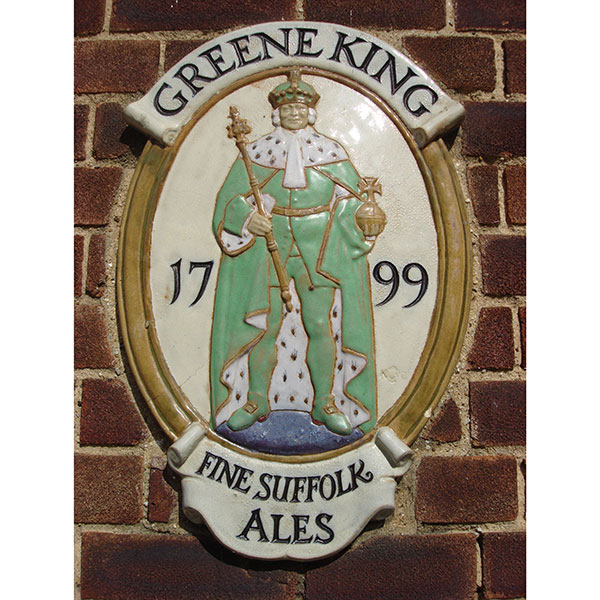
Greene King Fine Suffolk Ales
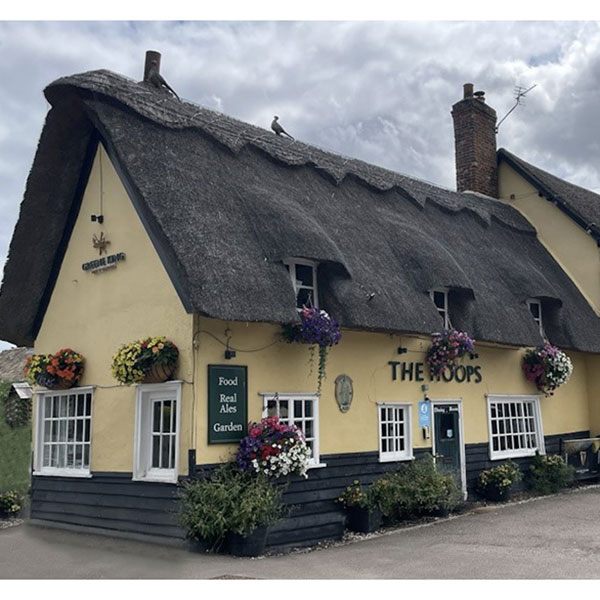
Greene King Thatched Pub
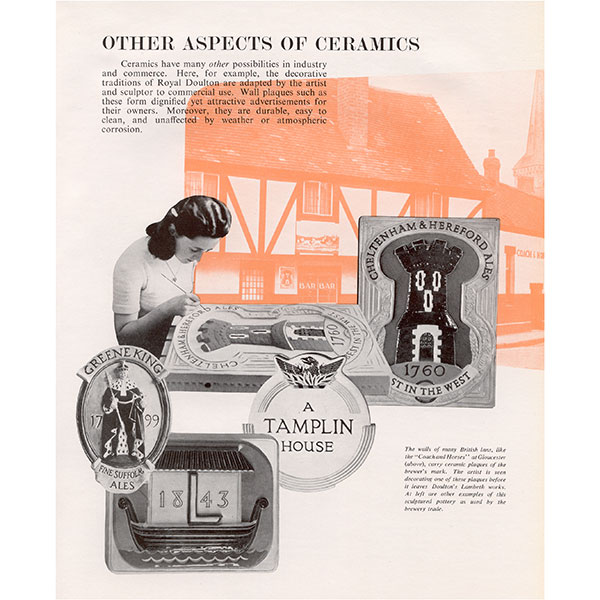
Doulton Pub Plaques
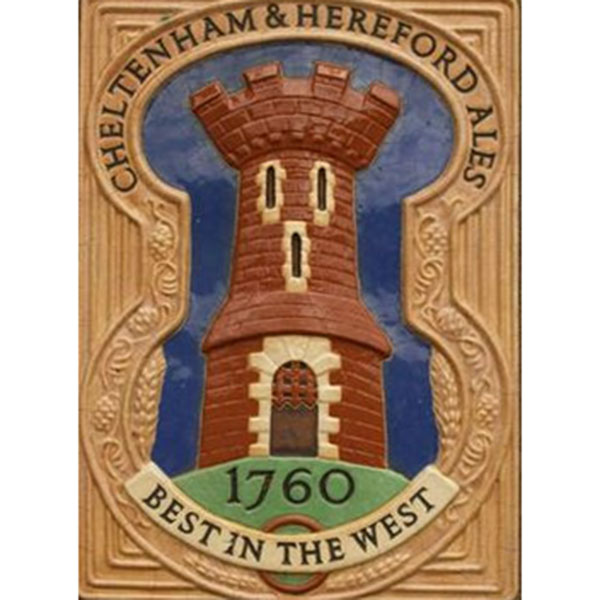
Cheltenham & Hereford Ales Plaque

Beer Street and Gin Lane W. Hogarth
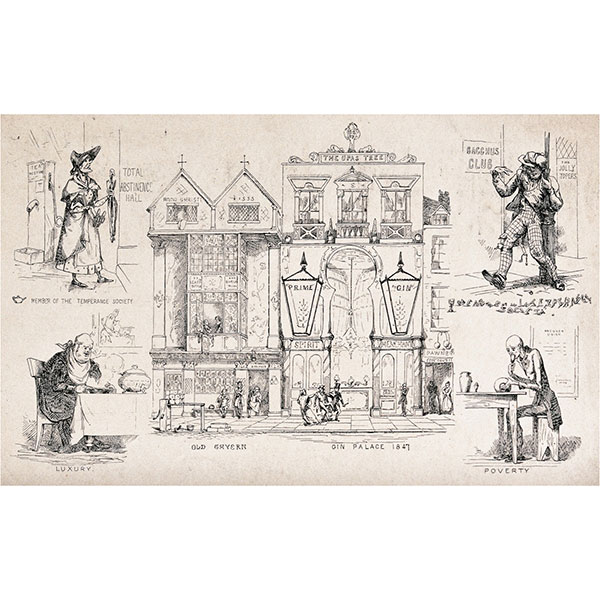
Gin Palace and Traditional Tavern J. Leighton
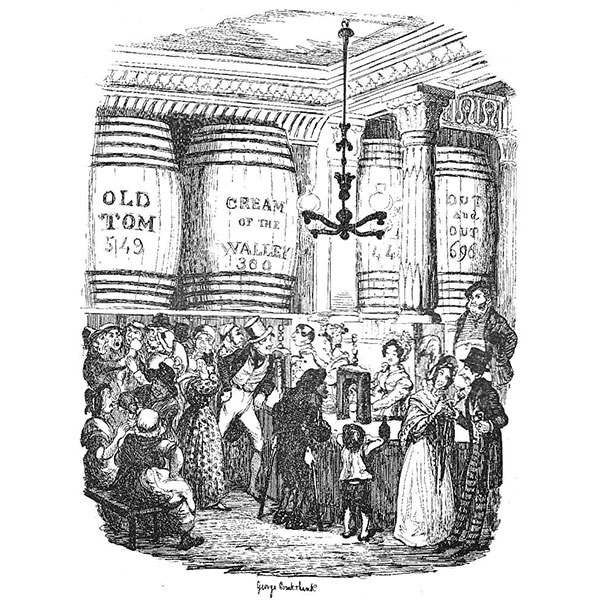
Gin Palace G. Cruikshank
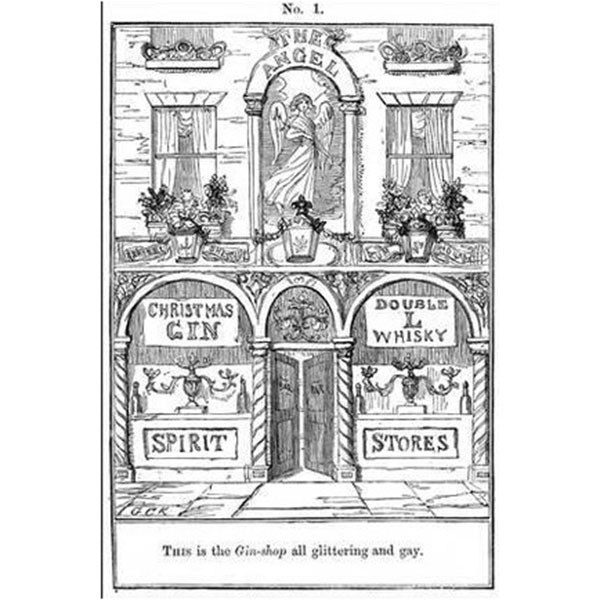
Gin Palace G. Cruikshank
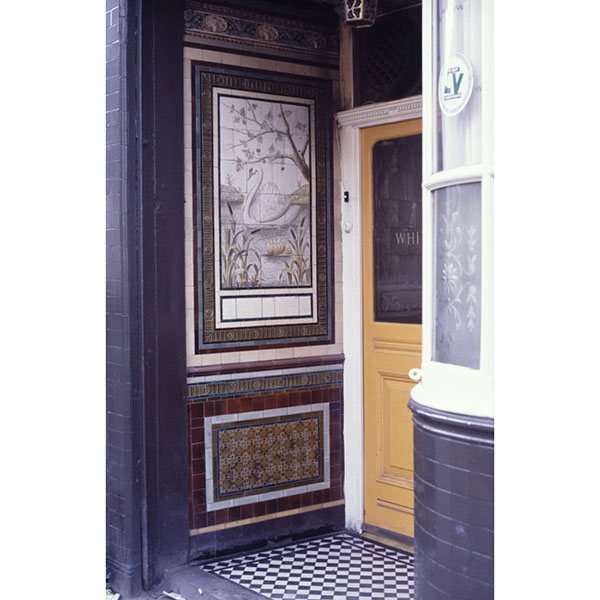
White Swan Pub
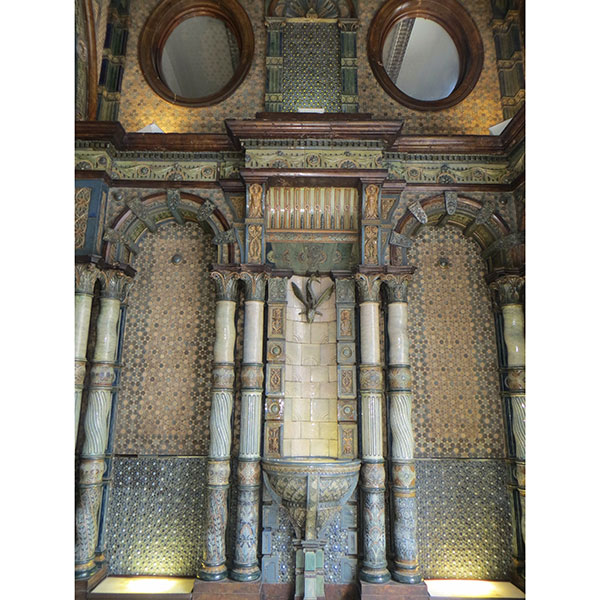
Palsgrove Hotel now Lloyd’s Bank
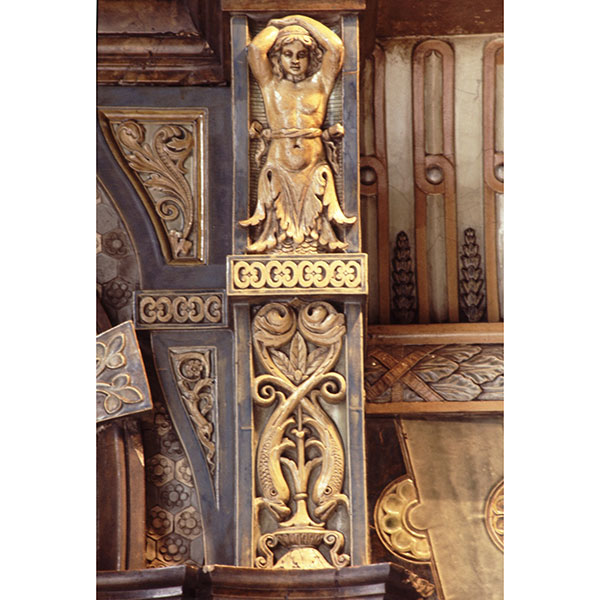
Palsgrove Hotel Detail
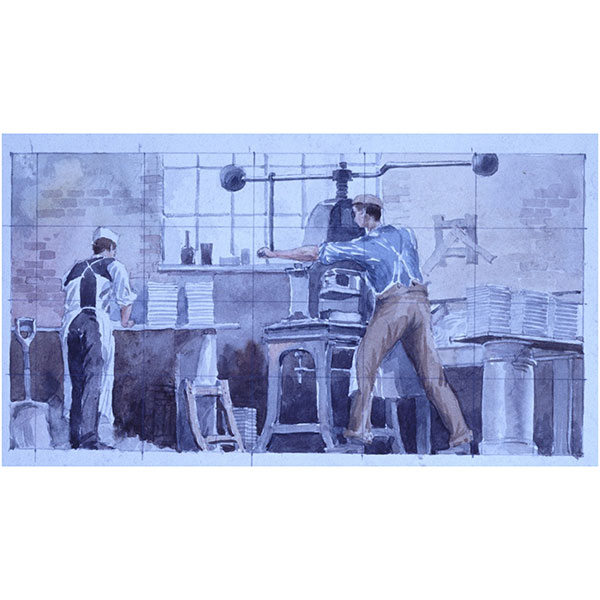
Making Tiles at Doulton
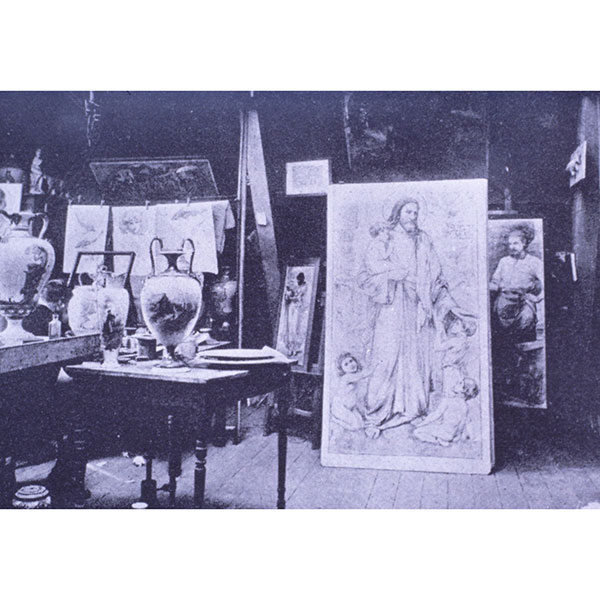
John Eyre’s Studio
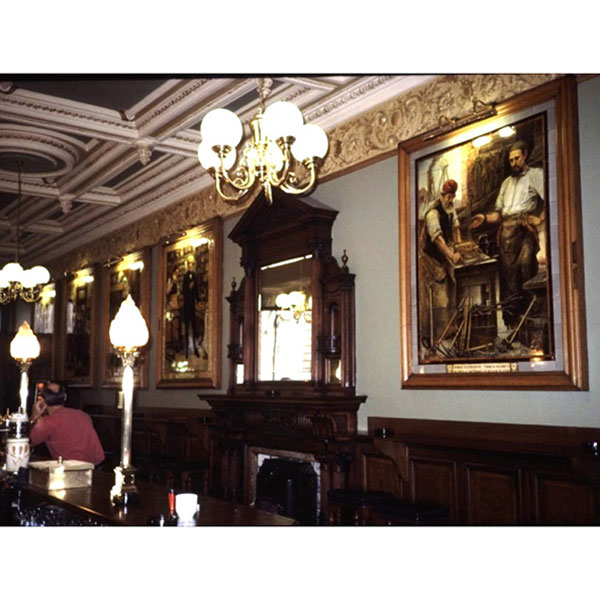
Doulton Tile Panels at the Cafe Royal Edinburgh
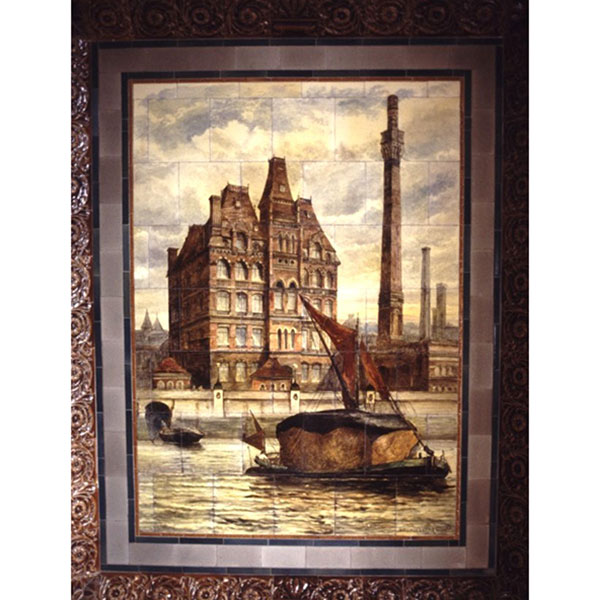
Doulton Lambeth Pottery for Watney Brewers
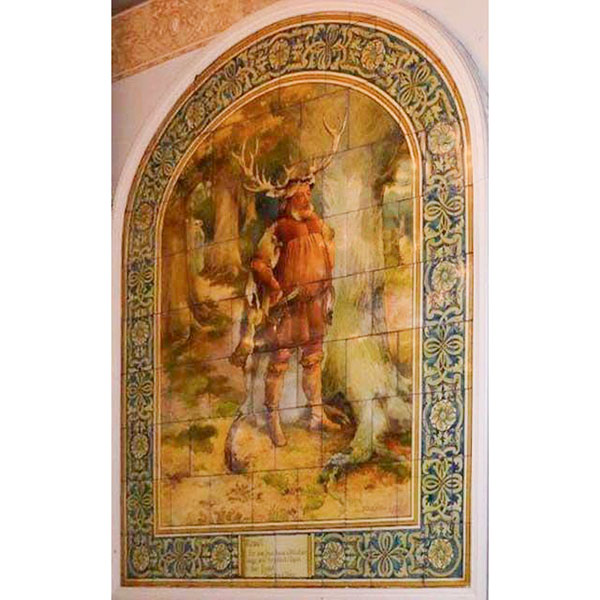
Doulton Falstaff St. James Tavern
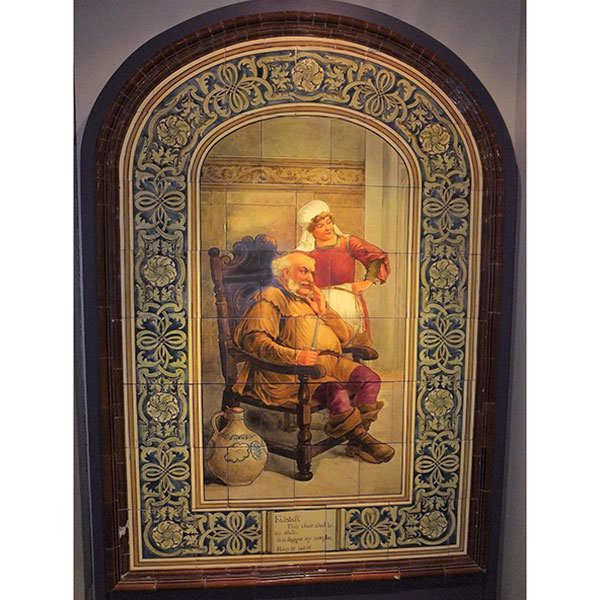
Doulton Falstaff Gladstone Pottery Museum
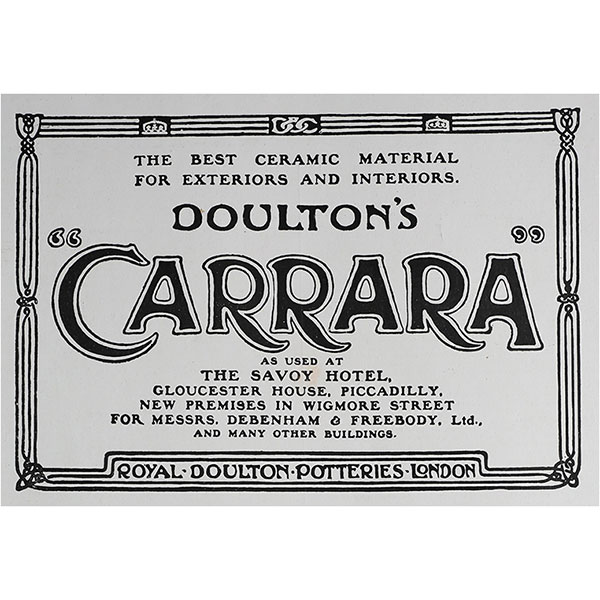
Doulton Carrara Advert
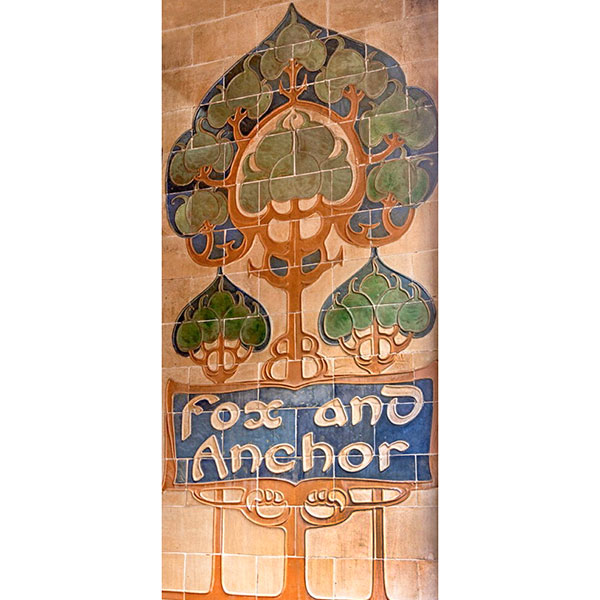
Fox and Anchor Carrara Panel
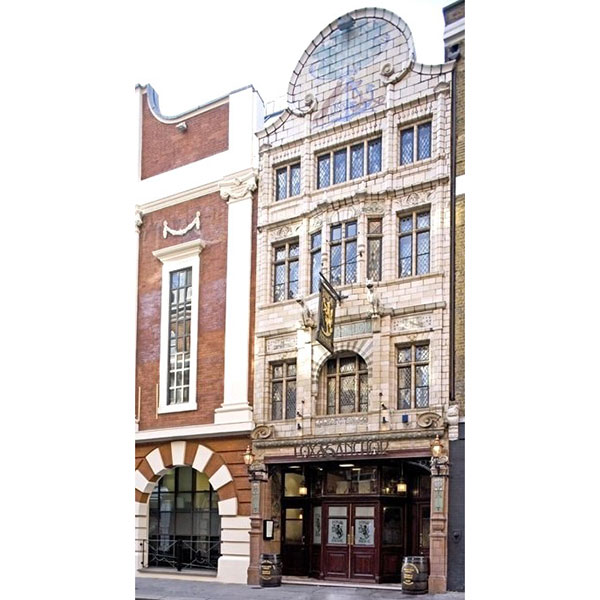
Fox and Anchor Doulton Carrara Pub
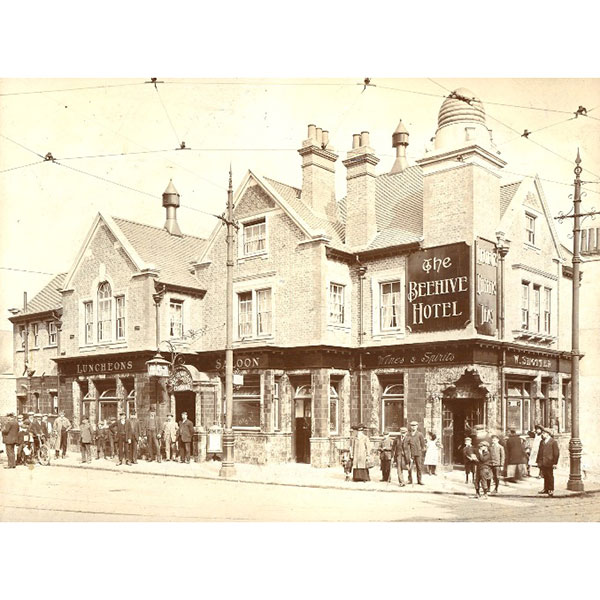
Beehive Brentford Doulton Tiles
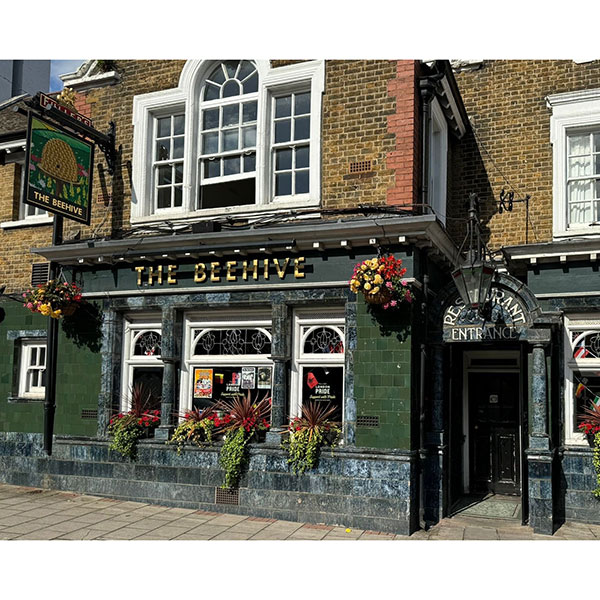
The Beehive Brentford London
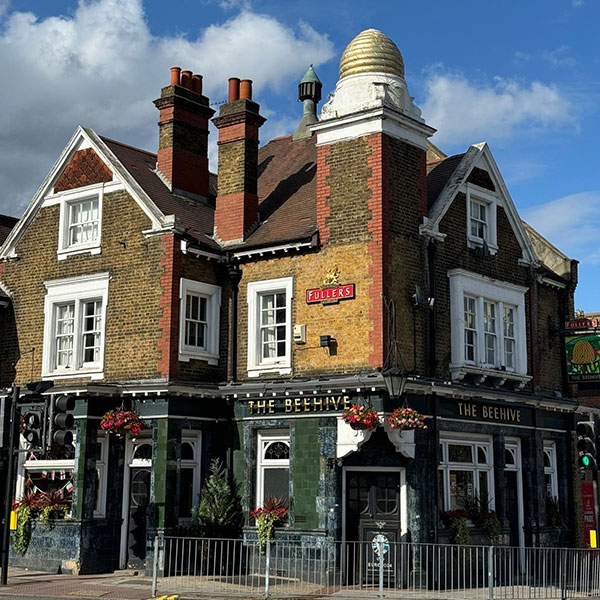
The Beehive Brentford London
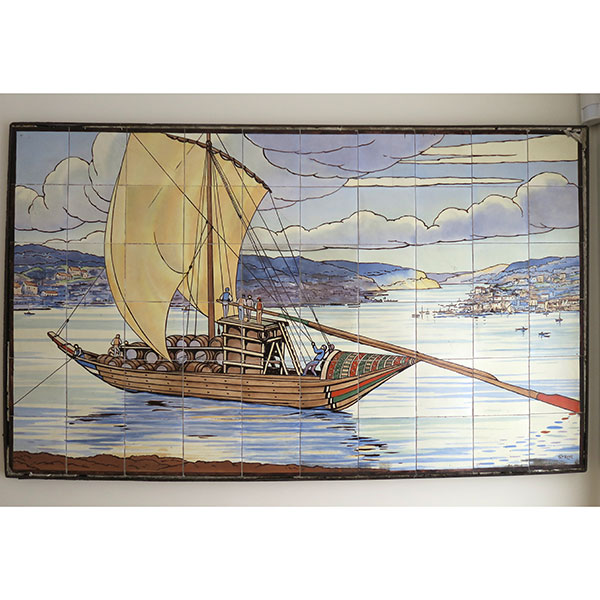
Doulton Henekey Tile Mural
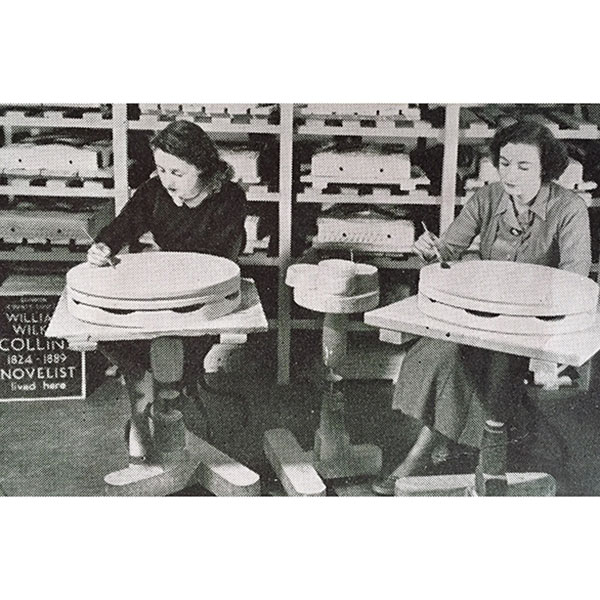
Painting Doulton Blue Plaques
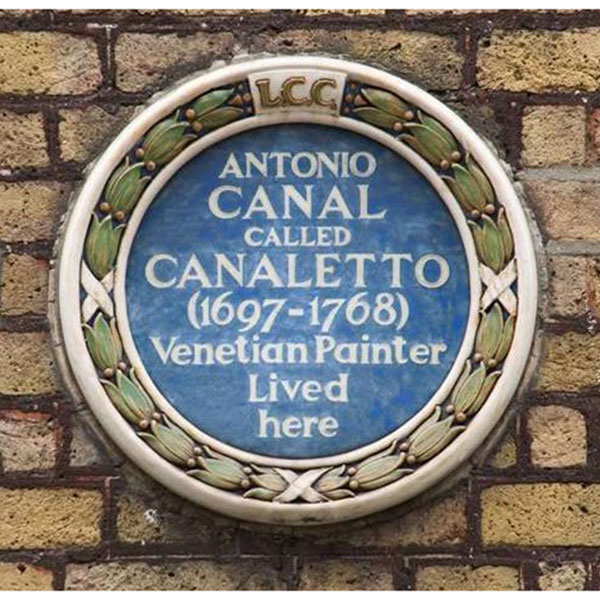
Doulton Della Robbia Style Blue Plaque
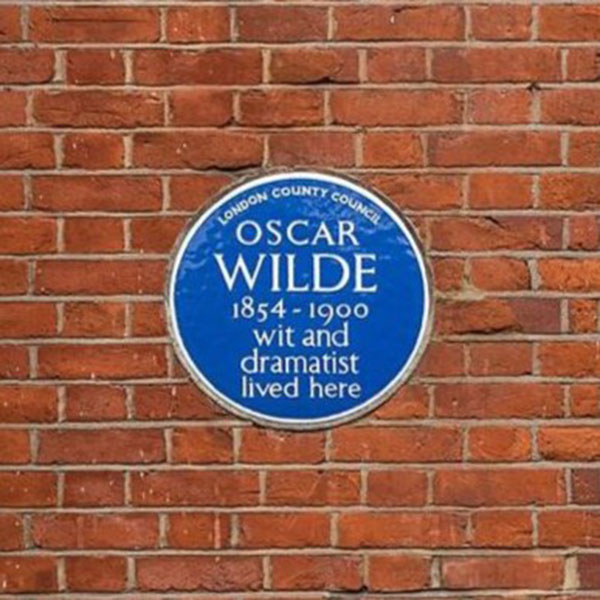
Oscar Wilde Blue Plaque
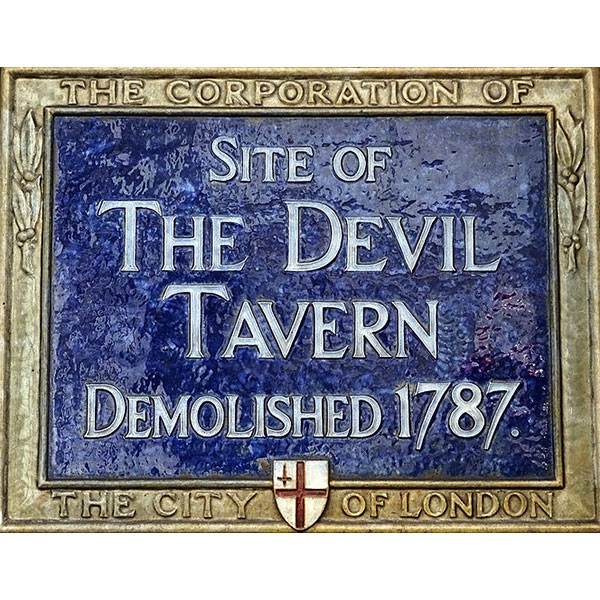
City of London Blue Plaque
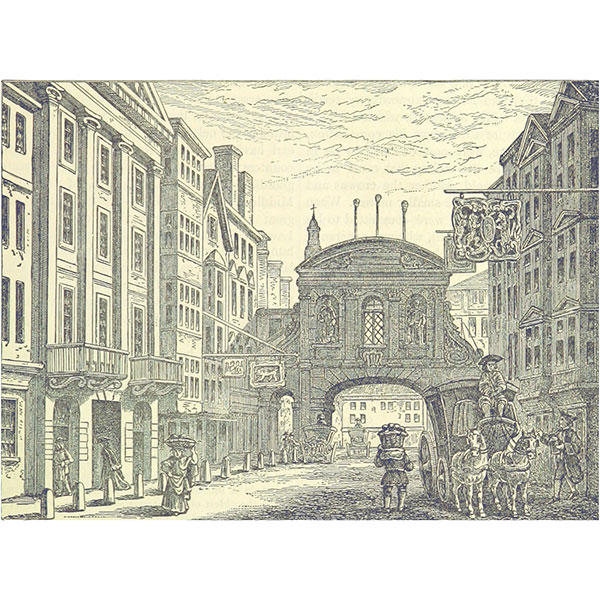
The Devil Tavern at Old Temple Bar
